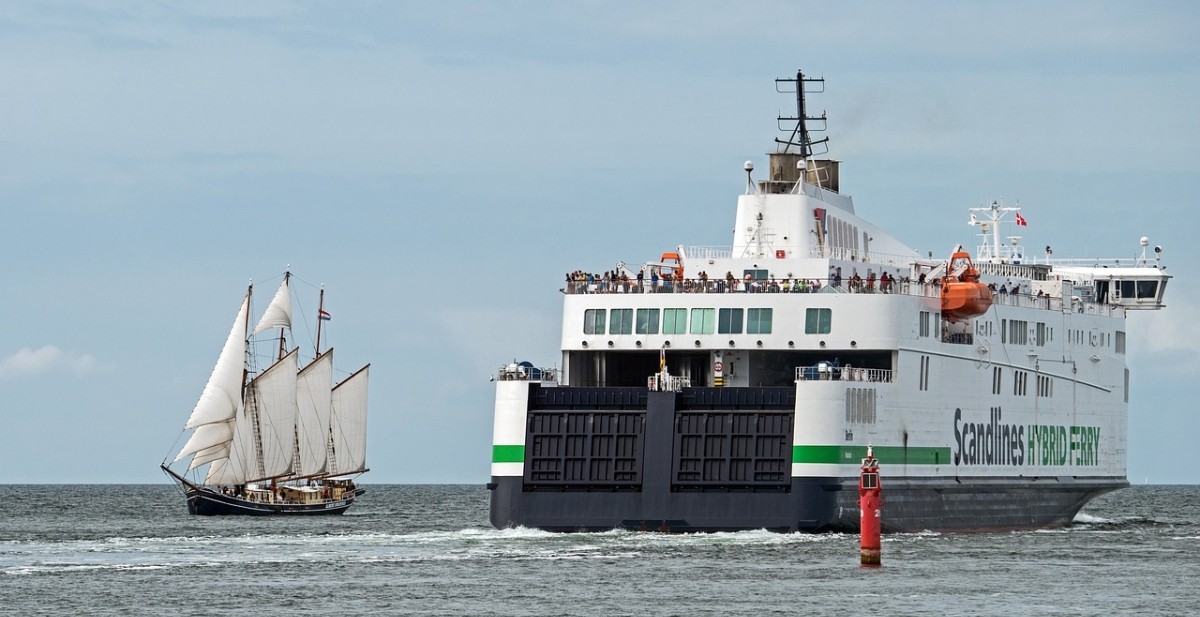Hybrid progress increases shipowner options

Wärtsilä outlines the advancements in hybrid ship technology
The maritime sector is experiencing a remarkable shift with the emergence of hybrid ships as one solution to achieving net zero in shipping. In a paper, marine technology specialist Wärtsilä examines the latest trends shaping the course of hybrid ship propulsion. From the introduction of novel battery chemistries and the surge in battery power capacity to the promising potential of fuel cells and the evolution of electrical integration concepts, hybrid technology is transforming, driven by sustainability and optimised performance.
Traditionally, marine batteries have relied on lithium-ion technology, much like those used in the automotive and energy sectors. However, Wärtsilä identifies a significant shift in this area. Alongside prevalent nickel-manganese-cobalt (NMC) batteries, new lithium-ion battery chemistries are making their way into the marine realm. Notable introductions include lithium-ferro-phosphate (LFP) batteries and lithium-titanium-oxide (LTO) batteries.
These emerging battery types offer distinct advantages tailored to specific applications. Longer lifespan, reduced weight, and lower costs are some of the benefits associated with these new chemistries.
Further, the transition from conventional power sources to hybrid solutions has been catalysed by advancements in battery power.
Historically, batteries were relegated to auxiliary roles, but today's batteries, with capacities up to 40 MWh, enable ships to achieve zero-emission manoeuvring and provide power during harbour stays.
These robust energy storage systems facilitate flexibility in energy-intensive tasks and pave the way for innovative operational profiles.
Battery considerations
Wärtsilä continued that contrary to misconceptions, the motivation behind the pursuit of more powerful batteries is not cost-driven. While battery prices witnessed a steady decline prior to 2020, this trajectory has been altered due to escalating global demand for battery cells and raw materials. Wärtsilä emphasised that substantial battery sizes offer operational versatility, potentially leading to significant fuel savings. The hybrid Misje Vita bulk carrier, for instance, demonstrated up to 40% fuel savings compared with its counterparts through the integration of advanced battery technology.
Wärtsilä also underscored the significance of functional considerations in determining the ideal battery size for a vessel. A ship's operational profile and intended functions should dictate battery design, enabling efficient propulsion systems. This paradigm shift emphasises the importance of redesigning propulsion systems based on functional requirements, rather than simply adding weight through battery integration.
Innovation in ship design driven by functional optimisation can yield substantial cost savings and operational efficiencies.
Wärtsilä urged ship owners to engage experts in cases where existing propulsion designs are not aligned with the potential benefits of hybrid systems, advocating for a holistic re-evaluation of vessel design.
Fuel cells, meanwhile, are emerging as a pivotal technology in the maritime sector, working akin to self-sustaining batteries that generate electricity and heat through continuous fuel and oxidising agent consumption. While batteries excel in handling variable loads, fuel cells shine in stable base load scenarios. Presently, proton-exchange membrane fuel cells (PEMFCs) are available for marine applications. These demonstrate over 50% efficiency when hydrogen is directly employed.
The future also holds promise for solid oxide fuel cells (SOFCs), which can generate electricity directly from methanol or ammonia, although this technology remains under development. Wärtsilä highlights that PEMFCs stand as a viable option for hydrogen-driven propulsion, albeit with considerations for space requirements and reduced vessel range due to hydrogen storage.
Current questions
The rise of direct current (DC) hubs in powertrain integration is another notable trend outlined by Wärtsilä. Hybrid ships traditionally house engines producing alternating current (AC) alongside DC battery systems. The emergence of DC hubs is reshaping electricity distribution, potentially eliminating the need for AC-to-DC transformations.
However, Wärtsilä said that while DC hubs hold promise for smaller high-speed engine vessels, they might not be optimal for larger or high-powered hybrid vessels. The paper underscores the importance of assessing vessel specifications and operational requirements before adopting DC hub integration.
Shore power, an essential component of hybrid ships, has experienced its own standardisation shift. The IEC 80005 standard for high-voltage shore connection (HVSC) systems, established in 2011, has been pivotal in this transformation. HVSC systems not only eliminate the need for auxiliary gensets while in port but also serve as a means to charge hybrid vessel batteries.
Wärtsilä pointed out that major hybrid vessels in production, such as ro-pax, ro-ro, and pure car and truck carriers, are now equipped with IEC 80005 shore power connections.
This standardisation facilitates the adoption of shore power across the maritime industry, enhancing battery charging capabilities.
The paper points out that as standardisation progresses, the efficiency and speed of charging processes will continue to improve, with potential benefits extending to reduced downtime and enhanced operational readiness.
Collectively, these trends reflect the maritime industry's concerted efforts to navigate toward sustainable, efficient, and innovative solutions as hybrid ships become an increasingly integral part of the maritime ecosystem.